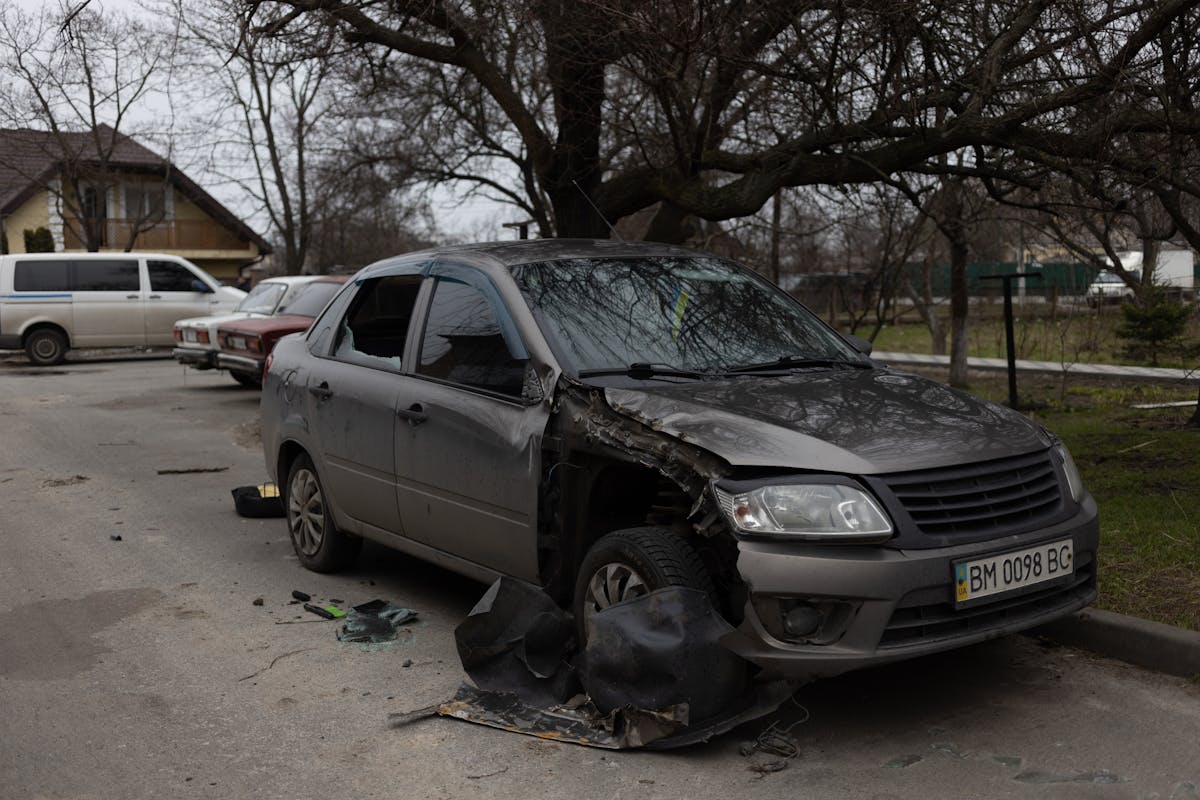In the intricate landscape of personal injury law in California, one concept that stands out is the doctrine of pure comparative negligence. This principle, unique in its own right, allows a plaintiff to recover damages even if they are found to be largely at fault for an accident. But how does this doctrine work in practice? How does it affect the dispensation of compensation and what implications does it hold for personal injury cases in the state? These are the critical questions that we will explore and unravel in our discussion.
Key Takeaways
- Pure comparative negligence in California allows injured parties to recover damages even if they are 99% at fault.
- The concept ensures a fair distribution of liability, with each party’s compensation reduced in proportion to their fault percentage.
- Fault determination is vital as it impacts compensation, which considers medical expenses, lost wages, and suffering.
- Legal representation is key to navigate this complex law and argue for lower fault percentages, increasing chances of favorable outcomes.
- This approach complicates personal injury cases, often leading to reduced compensation based on shared liability, making careful documentation essential.
Understanding Comparative Negligence
The concept of comparative negligence is an integral part of personal injury law in California. It involves carefully analyzing negligence definitions and performing liability assessments to ascertain fault in an accident. Comparative negligence holds that damages awarded in personal injury cases should be determined by the degree of each party’s culpability. To elaborate, if an injured party is found partially responsible for the incident leading to their harm, their compensation is proportionally reduced. This approach guarantees a fair and balanced legal outcome, as it takes into account all relevant circumstances of the case. Essentially, the principle of comparative negligence underscores the importance of individual responsibility and accurate liability assessments in the domain of personal injury law.
The Role of Pure Comparative Negligence
The Role of Pure Comparative Negligence is instrumental in understanding the legal landscape of California. Its application in California law greatly shapes the outcome of injury claims, making it an integral part of the litigation process. The subsequent discussion will elucidate this concept, its application, and its impact on injury claims in the state of California.
Understanding Pure Comparative Negligence
How does one navigate the complex terrain of pure comparative negligence in California? To begin, an understanding of the negligence definition is essential. In legal terminology, negligence refers to the failure to exercise reasonable care or caution in a situation where one has a duty to do so, leading to harm or damage.
In the domain of pure comparative negligence, liability assessment plays an important role. It involves determining the degree of fault for each party involved in an incident. This system allows a damaged party to recover even if they were 99% at fault, but their recovery is reduced by their degree of fault. Consequently, it provides a nuanced, fair approach to resolving disputes arising from negligence.
Application in California Law
Often in California, the doctrine of pure comparative negligence is applied in personal injury cases to fairly distribute the financial burden among all parties involved. Under this principle, the courts meticulously evaluate each party’s actions against negligence standards to ascertain their level of fault. Following this, liability allocation is proportionate to each party’s degree of negligence. This means that even if a plaintiff is 99% at fault, they can still recover 1% of the damages. The law therefore encourages responsible behavior while ensuring justice. However, it’s worth noting that the doctrine’s application can be complex, often necessitating a profound understanding of legal nuances. This underscores the importance of legal counsel in steering such intricacies.
Impact on Injury Claims
While it may seem counterintuitive, the principle of pure comparative negligence greatly impacts injury claims, shaping both their structure and outcome. This impact assessment is essential as it influences the liability distribution among parties, fundamentally altering the compensation amount. Under this doctrine, even if a claimant is 99% at fault, they could still recover 1% of the damages from the other party. Consequently, the potential for recovery is never completely extinguished, regardless of the claimant’s degree of fault. This approach, however, can lead to complex and contentious litigation as parties negotiate percentages of fault. In this way, pure comparative negligence introduces a unique dynamic to injury claims, demanding thorough examination and meticulous calculation in the pursuit of fair resolution.

California’s Unique Approach
Despite many states adopting modified comparative negligence rules, California stands apart with its implementation of the pure comparative negligence system. California statutes mandate this distinctive approach, allowing plaintiffs to recover damages even if they were 99% at fault. This differentiation is rooted in the objective to distribute the burden of damages fairly rather than entirely absolving or penalizing one party. The court determines the degree of fault for each party involved, considering various negligence factors such as the duty of care and breach thereof. California’s pure comparative negligence system therefore reflects an intricate balance between individual responsibility and equitable compensation, making it a unique model in personal injury law.
How It Affects Compensation
In light of California’s pure comparative negligence system, the calculation of compensation in personal injury lawsuits undergoes a unique process. The claimant’s degree of fault plays a significant role in determining the final compensation amount. Fundamentally, this system adjusts claims based on the percentage of fault assigned to each party involved.
The court considers various compensation factors, such as medical expenses, lost wages, and pain and suffering, then customarily reduces the total by the claimant’s fault percentage. This means if a claimant is found 30% at fault, their compensation would be decreased by 30%. Consequently, while claim adjustments might seem disadvantageous for the plaintiff, they allow for a more equitable distribution of compensation, reflective of each party’s contribution to the incident.
Pure Comparative Negligence Examples
To enhance comprehension of pure comparative negligence in California, it is beneficial to examine real-world scenarios and case studies. Through these examples, we can dissect the legal complexities and expound on the implications of this doctrine in concrete terms. This approach will provide detailed insights into how courts apply this principle and how it impacts the distribution of damages among parties involved in a lawsuit.
Understanding Real-World Scenarios
While one might assume that fault always lies entirely with one party in an accident, the concept of pure comparative negligence highlights scenarios where both parties share the blame. To give you a better understanding of its real-life applications, consider everyday examples like a car accident at an intersection. Suppose both drivers were speeding and not paying full attention. In this case, a court may find that both drivers share fault. This concept extends to many other situations – a pedestrian jaywalking hit by a driver running a red light, or a customer slipping on a wet floor they were warned about. These everyday examples help illustrate the practicality of pure comparative negligence in California.
Analyzing Case Studies
Delving into the complexities of pure comparative negligence, one finds numerous real-life cases that further illuminate this legal principle. A case study analysis highlights negligence examples, demonstrating how this rule is applied in California courts. For instance, in a case where both the plaintiff and the defendant are found to be negligent, the damage award is reduced by the plaintiff’s percentage of fault. Consider a scenario where the plaintiff is 60% at fault and the defendant 40%. Under California’s pure comparative negligence rule, the plaintiff’s award is reduced by 60%. Consequently, a $100,000 award becomes $40,000. These examples underscore the significant impact of this principle on the claimant’s potential recovery. Analyzing such cases provides a concrete understanding of pure comparative negligence in practice.
Implications for Personal Injury Cases
A significant number of personal injury cases in California are affected by the doctrine of pure comparative negligence. This legislation has profound legal implications, fundamentally transforming the manner in which liability is assessed. Under this rule, the court determines the percentage of fault attributable to each party involved in the incident. Even if the plaintiff is primarily responsible for the accident, they can still recover damages, albeit reduced by their degree of fault. This equitable distribution of liability guarantees that all parties bear the consequences of their actions. However, it may also complicate the resolution of personal injury cases, requiring meticulous analysis of the events leading to the injury. Consequently, understanding the intricacies of pure comparative negligence is essential for litigants and legal practitioners alike.
Tips for Navigating Pure Comparative Negligence
Maneuvering the complex landscape of pure comparative negligence in California requires a strategic approach. Thorough knowledge of legal intricacies is vital for traversing claims effectively. Understanding liabilities, both yours and the other party’s, forms the foundation of these claims. It is imperative to accurately identify and quantify your degree of fault to estimate potential reductions in compensation.
Legal representation is often essential, as attorneys are adept at interpreting complex laws, arguing for lower fault percentages, and maximizing possible compensation. They understand the nuances of the California court system and the implications of pure comparative negligence on your case. Engaging professional help can greatly streamline the process, reducing stress and increasing chances of a favorable outcome.
Frequently Asked Questions
How Does Pure Comparative Negligence Differ From Contributory Negligence?
Pure comparative negligence and contributory negligence differ primarily in fault allocation. In pure comparative negligence, damages are apportioned by degree of fault, while contributory negligence bars recovery if the plaintiff shares any fault.
Does Pure Comparative Negligence Apply to Property Damage Claims in California?
Yes, pure comparative negligence does apply to property damage claims in California. Regardless of the claimant’s degree of fault, damages may be recovered, although the award is reduced by their percentage of negligence.
Can a Party With Greater Fault Still Recover Under Pure Comparative Negligence?
Yes, under California’s pure comparative negligence system, a party with greater fault can still recover damages. The final award is reduced by the percentage of fault allocated to that party, enabling a greater recovery possibility.
How Does Californias Court System Handle Pure Comparative Negligence?
In handling negligence cases, California’s court system applies the rule of pure comparative negligence. Court rulings determine liability proportionately, allowing even a party with greater fault to recover some damages.
Are There Any Legal Reforms Proposed for Pure Comparative Negligence Laws in California?
Currently, there are no known reform proposals or legislative changes being considered for the pure comparative negligence laws in California. The existing laws continue to be applied in personal injury and other related legal cases.

